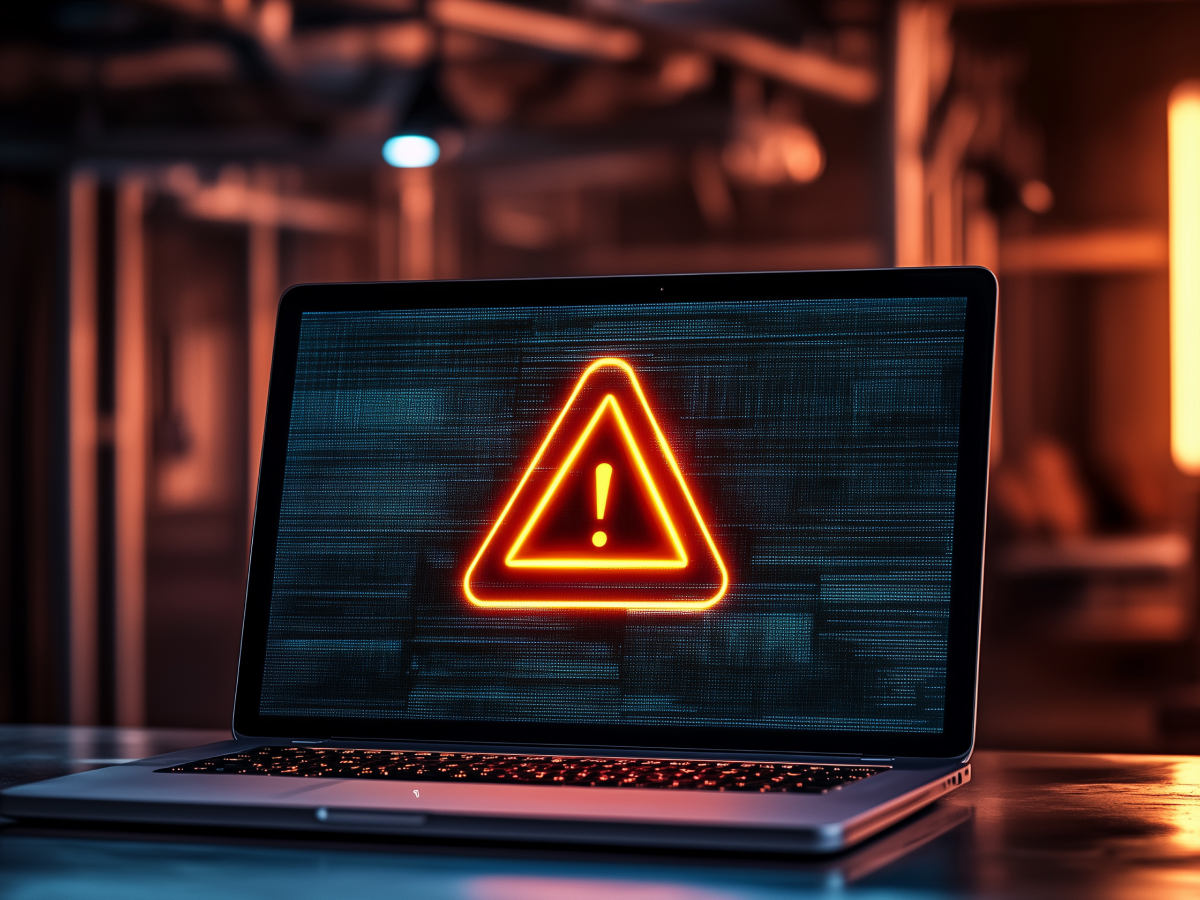Define and align with an explicit risk appetite
If you’re leading a company and you haven’t clearly defined your risk appetite, you’re guessing your way through strategy. That’s not how leaders win in high-stakes environments. You need to define, clearly, what level of risk is acceptable across your organization. Without this clarity, you aren’t managing risk. You’re reacting to it.
When IT leaders understand risk appetite, not just intellectually, but operationally, it becomes a decision-making accelerator. It removes hesitation, simplifies trade-offs, and aligns people around what matters. Everything starts to move faster: technology choices, innovation cycles, security investments. You stop arguing over minor threats and start making progress on actual priorities.
But many companies fail to document what type of risk they’re comfortable taking. They view risk through the filters of compliance or cybersecurity. That’s too narrow. Risk is about how much uncertainty your business can handle while pursuing growth. It needs to be discussed in every strategic, financial, and operational planning session. Without shared understanding, your executive team, board, and technology leadership may be working at cross-purposes.
Paola Saibene, a principal consultant at Resultant, says CIOs often mistake risk management for checkbox compliance work. She’s right. Risk management is actually about seeing clearly, planning ahead, and giving your teams the confidence to move fast without compromising what matters. Her recommendation: designate an enterprise risk officer. Done right, this role becomes an internal partner who helps you modulate risk, accelerating where possible, pausing where necessary, and framing it all in language the business understands.
And here’s the reality: constraints are part of the game. According to PwC’s Global Risk Survey, 75% of risk leaders say financial challenges limit their ability to invest in the tools needed to assess and monitor risk effectively. That means prioritization is mandatory. You won’t get to fund everything, so let the risk appetite show you how to decide what gets attention, and what waits until later.
When you define risk appetite clearly and make it part of your operating rhythm, you’re building a faster, smarter, more aligned company.
Maintain a comprehensive and continuously updated application inventory
Most organizations don’t have a full view of the applications running in their environment. That’s a problem. If you can’t see it, you can’t secure it. And if you don’t know what you’re running, you can’t scale intelligently. This means having accurate, real-time awareness of your digital infrastructure, because risk hides in neglected systems.
A dynamic application inventory lets you operate from a position of control. It’s how you detect security gaps early, catch redundancy before it consumes budget, and identify legacy tools that slow you down. When companies adopt new technologies rapidly, especially AI-powered tools, they often overlook the downstream exposure they introduce: internal data leaking into public AI engines, unvetted tools bypassing governance, or outdated apps that no longer meet compliance standards.
Howard Grimes, CEO of the Cybersecurity Manufacturing Innovation Institute, is very clear on this. He warns that unmanaged application portfolios, especially in today’s AI-driven environments, create exposure, fast. Sensitive IP gets shared where it shouldn’t, apps are stretched beyond their original purpose, and shadow tools quietly expand your threat landscape. His point is simple: update your inventories constantly, or get left open to risks you didn’t anticipate.
CIOs need to rationalize every app across the enterprise. What’s essential? What’s redundant? What’s introducing more complexity than value? This means reducing attack surfaces and tightening control without slowing innovation. Review your application portfolio actively, with clear metrics tied to business outcomes, resource usage, and security posture.
Risks increase as tool adoption accelerates. Employees download what helps them move faster, which is fine, until compliance is broken and the threat surfaces multiply. That’s why strong governance and regular reviews are critical. Done right, this also frees up budget, cutting dead weight apps allows reinvestment in higher-value solutions.
Enterprise leaders need to expect this level of discipline. Applications must serve the mission, not just exist in your environment. When your portfolio is clean, current, and aligned with your business strategy, you unlock speed and security at the same time. Ignoring this is not an option.
Adopt a proactive, organization-wide cybersecurity culture
Cybersecurity threats don’t wait. Neither should your approach to protecting company assets. A reactive mindset is no longer enough, not in a world of constant, adaptive threats. You need a culture where security is expected, understood, and practiced by everyone, from the boardroom to the intern desk.
This starts with a shift: treat cybersecurity as a core operational function, not just an IT responsibility. Technical controls matter, but human behavior and system preparedness matter just as much. That means structured employee training, regular patching and updates, strong access controls, and a tested incident response plan. You’re building readiness, not reacting to failure.
Jonathan Selby, Technology Practice Lead at Founder Shield, puts it plainly: “There’s no luxury in waiting for the attack. Every team member plays a vital role.” He’s right. Effective cybersecurity depends on layered involvement. You can’t rely solely on insurance policies or endpoint firewalls. It comes down to how well your organization anticipates risk and acts without delay when a threat emerges.
The most effective strategy is multi-tiered and interconnected. Technical defenses are only part of it. You also need decision-making frameworks, role-based responsibilities, and clear communications during a breach. This avoids confusion and speeds up your reaction window, where every minute counts.
Leadership needs to lead here. Executive commitment to cybersecurity sets the tone. If security conversations only happen after an incident, the organization never really learns. But when leaders treat it as a strategic priority, everyone follows. Culture spreads faster when it’s reinforced from the top.
There’s also no value in minimizing spend for the sake of margins if it weakens your posture. Pulling back on cyber liability coverage or allowing expired response plans is just unnecessary exposure. The cost of one breach will undo years of cost-saving decisions.
A proactive cybersecurity culture is the base layer of trust customers, partners, and shareholders rely on. Build it deliberately. Maintain it constantly. Make it everyone’s job.
Integrate risk management into daily enterprise operations
Most organizations manage risk consistently, and strategically. The work is happening, but it’s scattered across departments. That’s inefficient. Risk management should be embedded into daily operations, not treated as a separate function that only shows up during audits or after an incident.
When risk is formalized as part of routine decision-making, the entire company operates with better clarity. You move from reacting to threats to anticipating them. Projects get prioritized for the right reasons, based on risk and impact, not just budget or internal influence. And when every team understands how risk is evaluated, you avoid miscommunication, delays, and unexpected blind spots in execution.
The goal is to bring structure and shared understanding. If you can express risk in business terms, impact on revenue, customer trust, operational continuity, you build trust with stakeholders who aren’t technical. Boards and executive teams don’t want jargon. They need clarity on what’s at stake and what action is needed.
Will Klotz, Senior Risk Security Consultant at GuidePoint Security, points out that organizations are already doing this work informally. The opportunity is to make it deliberate. He emphasizes that when risk becomes part of the language of planning and operations, it strengthens decision-making and focus across departments.
Formalizing risk also improves transparency. When everyone uses a shared framework, you spot gaps earlier and scale smarter. Risk metrics can be used to track performance, allocate resources, and justify investment. And over time, this approach compounds, fewer firefights, fewer surprises, more execution aligned with strategy.
Leaders who take the initiative to normalize risk conversations empower teams to be faster and more autonomous. Everyone knows the rules, the invisible guesswork disappears, and risk becomes a tool for precision, not something tolerated or feared. That’s when the organization starts to operate at full capacity.
Ground risk strategies in real-world scenarios
Most risk strategies look good on paper, until something real happens. That’s the problem. Too many companies design their risk frameworks around theoretical threats, not the actual incidents that are causing financial and reputational damage across their industries every month. If your risk program hasn’t been tested against actual events, you don’t know if it works.
Security planning needs to be practical. Start by reviewing the breaches and failures happening to companies like yours. Look at the techniques attackers used, the systems they exploited, and how long it took to detect and respond. Then ask: if that were us, what would the result have been? Would we still be operational? Would customer data be safe? Would we have hit regulatory thresholds?
Brian Soby, CTO and co-founder at AppOmni, pushes this point with urgency. He notes a major disconnect between what companies believe they’re prepared to handle and what really happens in the field. His advice is direct, take the headlines, take the evidence, and test your current defenses against them. It’s the fastest way to identify where your assumptions no longer hold up.
This process reveals whether your strategies are outdated, if key controls are missing, or if your response plans are too slow. It gives weight to internal discussions and helps justify changes where budget or resistance might otherwise stall improvement. Risk management must evolve. That only happens when it’s subjected to input beyond internal opinion.
Leaders should also focus on comparative learning. Look at what similar organizations are doing. What tools do they use? What controls have they enforced? When they were compromised, what worked and what didn’t? There’s no need to wait for a breach in your own corridor before taking action. Rapidly integrating findings from real cases closes gaps faster than compliance checklists ever will.
Prioritize resiliency and rapid recovery from disruptions
Too many organizations focus heavily on defense, firewalls, access control, network monitoring, and neglect their capacity to recover. That’s a strategic flaw. A resilient system protect against threats and it absorbs disruptions and restores critical operations fast. Resilience isn’t optional. It’s the minimum requirement for continuity in unpredictable environments.
Your goal shouldn’t be risk elimination, it should be operational continuity. Systems will fail. Attacks will happen. What matters is your ability to recover without long-term damage to business operations, stakeholder trust, or revenue. That requires rigorous disaster recovery and business continuity plans, supported by tested metrics like recovery time objectives (RTO) and recovery point objectives (RPO).
Greg Sullivan, founding partner at CIOSO Global and former CIO of Carnival Corp, emphasizes this gap clearly. Too many organizations fall into the trap of overinvesting in prevention, assuming it will be enough. But when it fails—and it eventually will, recovery becomes the only thing that matters. Sullivan advises organizations to prioritize system resilience and to regularly test their failover and recovery processes, not just document them.
Resiliency should be integrated into every transformation and infrastructure conversation from the start. If your systems aren’t designed to withstand a security incident or performance outage, you’re betting your business on luck. That’s something leaders can’t afford, especially with investors, regulators, and customers constantly evaluating organizational readiness.
Every part of the enterprise should know the recovery plan. Decision-making during an outage needs to be fast and aligned. When only a few people understand the recovery procedures, delays multiply and impact grows. Run simulations. Fix coordination gaps. Update documentation often. Make sure leadership is informed and trained to lead in recovery scenarios.
When your recovery process is rehearsed and repeatable, it becomes a competitive advantage. It builds confidence internally, reassures external partners, and lets you make aggressive moves knowing you can withstand setbacks. Long-term growth relies on it—because speed and scale both require the ability to recover without hesitation.
Align IT risk management with overall business objectives
Technology should never be a disconnected function. When IT risk management operates in isolation, it leads to misaligned priorities, wasted resources, and missed opportunities. Instead, risk decisions related to technology must be directly tied to what the business is trying to achieve, growth, resilience, speed, compliance, and customer trust.
Strong alignment between IT and business strategy ensures that every security investment supports a real outcome. It allows CIOs to justify spending not just in terms of infrastructure, but in clear business value, whether that’s avoiding financial loss, maintaining uptime for critical services, or meeting regulatory requirements that protect brand integrity and investor confidence.
John Bruce, Chief Information Security Officer at Quorum Cyber, presents this clearly: when IT and business goals are synchronized, organizations make smarter decisions, move faster, and gain stronger executive buy-in. That alignment turns cybersecurity and IT risk management into a business enabler, not a cost center.
The best way to structure this is with governance that aligns both sides. That means executive-backed risk committees, shared KPIs, and risk registers that link technical threats to business impact. Leaders should expect dashboards focused not just on IT metrics, but on how technology risks affect operations, reputation, and revenue streams. The focus is clarity, not complication.
Without this alignment, IT risks are typically undervalued until something breaks. When that happens, recovery becomes more difficult, and accountability turns into blame. But when IT risk is managed through a business lens, where every threat is evaluated based on its potential to disrupt strategic outcomes, it transforms into a competitive capability.
Leaders who want real-time visibility, faster decisions, and smarter investments need this bridge between IT and business. It’s not enough for CIOs to understand the business, CEOs, CFOs, and boards need to understand the risk landscape in language that drives leadership. When that happens, the entire enterprise becomes more agile, more secure, and more aligned with what actually drives long-term success.
In conclusion
Risk doesn’t slow down progress, mismanaged risk does. When CIOs treat risk as a strategic function, not a technical hurdle, the entire organization benefits. The difference is in clarity, alignment, and execution.
Executives who demand real collaboration between IT, security, and business operations create stronger, faster, more adaptive companies. Risk becomes something you shape, deliberately, not something you chase after. That mindset is what separates reactive organizations from market leaders.
Embed resilience. Align with the mission. Execute decisively. The companies that do all three won’t just manage risk, they’ll use it to reinforce every move they make.





